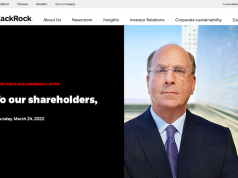IMF: United States to Avoid Recession, GDP Growth Slows to 2.9%, 1.7% & 0.8% in 2022, 2023 & 2024
25th June 2022 | Hong Kong
The International Monetary Fund (IMF) has released a statement on the United States economy with the world’s largest economy (United States: $20.1 trillion, China $14.7 trillion) to avoid a recession in 2022, but with GDP growth (Gross Domestic Product) slowing to 2.9% in 2022, and 1.7% in 2023 and 0.8% in 2024. The statement provided 6 key points: A Strong Recovery from the Pandemic, The Challenge of Inflation, Reducing Wage and Price Pressures, Outlook and Risks, Energizing Supply Side Solutions, Transitioning to a Low Carbon Economy. See below for full statement and United States GDP & key data from 2020 to 2026.
“ IMF: United States to Avoid Recession, GDP Growth Slows to 2.9%, 1.7% & 0.8% in 2022, 2023 & 2024 “
IMF Statement on United States

United States of America: Concluding Statement of the 2022 Article IV Mission
A Strong Recovery from the Pandemic
The U.S. economy has staged a strong recovery from the COVID-19 shock. The positive effects of unprecedented policy stimulus, combined with the advantages of a highly flexible economy, have been clear. Just over two years after the COVID-19 shock, the unemployment rate and other measures of labor force underutilization have returned to end-2019 levels and output is close to its pre-pandemic trend. Rapid wage increases for lower income workers have reduced income polarization, poverty fell to 9.1 percent in 2020 (from 11.8 percent in 2019), and there were even larger reductions in poverty for female-headed households, children, African Americans and Hispanics. On net, 8.5 million jobs have been created since the end of 2020. There has, however, been a relatively slow recovery of labor force participation (reflecting a secular, demographic downtrend and early retirements) and there are important concerns around the potential longer run effects of the pandemic on education outcomes and productivity.
Over the past two years, U.S. financial institutions and corporates have been resilient, albeit with the aid of significant policy support. Stress tests show the banks to be very liquid and highly capitalized. Although corporate leverage is high, risks are somewhat mitigated by increased cash buffers, a lengthening of debt duration, and generally healthy interest coverage ratios. High levels of leverage among hedge funds and life insurance companies pose financial stability risks. Also, digital assets have grown rapidly and the recent bout of selling pressures highlights the fragility and, in some cases, opacity of this asset class. Finally, there are structural vulnerabilities in fixed income markets which, during various episodes over the past few years, have been insufficiently resilient under stress. This creates a risk to market functioning, especially as liquidity is now being withdrawn and financial conditions are tightening.
The 2021 external position remains moderately weaker than the level implied by medium-term fundamentals and desirable policies. The current account deficit has risen over the past two years as the composition of consumer demand shifted away from services to tradeable goods, a huge fiscal stimulus was put in place, and the U.S. recovered faster than trading partners.
The Challenge of Inflation
Despite the positive outcomes described above, many of the downside risks highlighted at the time of the 2021 Article IV have now been realized. Supply chain constraints proved more persistent than expected and there are new concerns linked to the Russian invasion of Ukraine and Chinese lockdowns. Most saliently, though, a broad-based surge in inflation—that was viewed as the leading economic risk at the time of the 2021 Article IV—has become a reality, posing systemic risks to both the U.S. and the global economy. After more than a decade of below-target inflation, the rapid depletion of slack, rising energy prices, and ongoing global supply disruptions have led to a significant acceleration in inflation. In year-on-year terms, core PCE inflation has likely peaked, but it remains at high levels, and median PCE inflation continues to rise, underlining the broad-based nature of price pressures. At the same time, wage pressures—that were initially apparent in low skill occupations—have spread quickly across the economy as firms struggle to fill vacancies and workers switch jobs at an increasing frequency.
Reducing Wage and Price Pressures
The policy priority now must be to expeditiously slow wage and price growth without precipitating a recession. This will be a tricky task. Global supply constraints and domestic labor shortages are likely to persist, and the Russian invasion of Ukraine is creating additional uncertainties. Although fiscal support is being withdrawn, the size and timing of the effects of past stimulus—which is expected to continue to feed into activity and inflation through a drawdown of household savings—are highly uncertain. The last time that the U.S. had to contend with a material acceleration in inflation was in the 1980s, a period when both the structure of the economy and the framework for monetary policy were markedly different. As a consequence, past episodes may not provide a useful guide in navigating the current conjuncture. This difficult policy endeavor is complicated even further by the uncertain and ongoing structural shifts in labor markets and the broader economy that were catalyzed by COVID-19.
Returning to price stability will require an assertive and rapid withdrawal of monetary accommodation. Over the past six months the Federal Reserve has rightly reacted to shifts in incoming data by signaling its intent to pursue a much tighter policy stance. To decisively bring inflation back to the Federal Reserve’s 2 percent goal by late 2023/early 2024, will require both raising the policy rate above neutral, in ex ante real terms, and keeping it there for some time. Given the scope of the current inflation problem, the FOMC’s decision at its June meeting—to raise rates by 75bp and provide forward guidance around a path for the federal funds rate that peaks at close to 4 percent—strikes the right balance. This policy path should serve to create the up-front tightening of financial conditions that will be necessary to quickly bring inflation back to target. It is also fully appropriate to quickly pare back the Federal Reserve’s balance sheet (as was communicated in the May FOMC meeting).
The FOMC will need to telegraph, well in advance, clear guidance on the expected path for the policy rate to ensure that the withdrawal of monetary accommodation is orderly, methodical, and transparent. Communications should continue to underscore that the FOMC’s policy guidance is not set in stone and will depend critically on future developments. Changes to strengthen the Federal Reserve’s communication tools would carry a high payoff in the current conjuncture. In particular, as an alternative to the Summary of Economic Projections, the Federal Reserve could begin publishing, at each policy meeting, an internally consistent economic projection and rate path, produced by Fed staff and potentially endorsed (or otherwise recognized) by the FOMC. This central forecast could be supplemented with a few alternate, quantified scenarios to show the range of views on the FOMC and the distribution of risks around the baseline. The Federal Reserve could also usefully clarify in its Statement on Longer-Run Goals and Monetary Policy Strategy how the policy framework now applies in an environment where inflation has moved well above 2 percent. These changes would help ensure that policymakers’ expectations about the likely future path of the policy rate are clearly conveyed and, in so doing, would strengthen the impact of the Fed’s forward guidance.
The stakes are clearly high. Misjudging the policy mix—in either direction—will result in sizable economic costs at home and negative outward spillovers to the global economy. An overly forceful policy response runs the risk of triggering an abrupt tightening in financial conditions and a U.S. recession, creating negative spillovers to the global economy. An insufficient shift in policies, though, would risk creating a prolonged period of high inflation that will necessitate even stronger—and more economically costly—measures in the future.
Outlook and Risks
Based on the median projection for the policy rate published at the June FOMC meeting, we expect the U.S. economy will slow in 2022-23 but narrowly avoid a recession. Reducing inflation and providing price stability will protect real incomes and help sustain growth over the medium term. There are, nonetheless, material risks that the current headwinds prove more persistent than expected, or the economy gets hit by another negative shock, which would turn the slowdown into a short-lived recession. The expected slowing of U.S. demand, combined with the needed tightening of global financial conditions, has significant potential to negatively impact individuals, firms, and countries that are leveraged in U.S. dollars and/or that face sizable near-term funding needs.
Beyond these downside macro risks, it is possible that markets may not prove sufficiently resilient to smoothly absorb higher interest rates and the shrinking of the Fed’s balance sheet. The known shortcomings in the “plumbing” of key Treasury and money markets and the run risks in certain asset management vehicles have the potential to create systemic problems in market functioning. Such an eventuality would present the Federal Reserve with a dilemma in deciding whether or not to inject liquidity to preserve market functioning at the same time as interest rates are moving higher to contain inflation. The introduction of standing facilities for primary dealers and foreign and international monetary authorities will help but more needs to be done (including to reduce possible stigma associated with the use of these facilities). Additional measures to mitigate these risks that should be considered include the introduction of central clearing for the Treasury market, modifying the design of the supplementary leverage ratio (to allow for an increase in dealer intermediation capacity), and moving to floating net asset value for all money market funds. In addition, consideration could be given to more binding (and possibly countercyclical) liquid asset requirements for certain nonbanks, subjecting asset management vehicles to an annual liquidity stress test, instituting pre-determined arrangements to lock-in a proportion of an investor’s shares in the event of unusual outflows, providing for in-kind redemptions (in certain circumstances) to meet withdrawals by institutional investors, and allowing for swing pricing or temporary gates on outflows.
Energizing Supply Side Solutions
The Infrastructure Investment and Jobs Act that passed in November was an important step forward in addressing supply-side constraints to growth. The legislation increased public capital spending by 2.3 percent of 2022 GDP, spread over the next several years and included resources to improve roads, public transit, ports, airports and waterways; expand access to clean water and broadband; improve the electricity grid; and start to build out an electric vehicle charging network. By removing bottlenecks and expanding capacity, these investments are expected, over the medium term, to add to the productive capacity of the economy. However, more infrastructure spending will likely be needed in the coming years to bring the overall quality of U.S. infrastructure to the level of other industrialized economies and to ensure the existing public capital stock is well maintained and resilient to the effects of climate change.
The inability to pass the rest of the administration’s reform agenda represents, though, a missed opportunity to energize the supply side of the U.S. economy. The economy urgently needs lasting changes to release supply-side constraints, raise productivity, support labor force participation, and incentivize investment and innovation. The slowing economy and rising inflation also further strengthen the longstanding case for a better social safety net. The near-term implications for the fiscal deficit and debt from these reforms should, though, be offset by revenue measures (many of which have already been put forward by the administration). Policy measures should include:
- Subsidies or tax credits to defray the cost of childcare and allow parents with young children to return to the workforce.
- Increasing the generosity of, and expanding the coverage of, the earned income tax credit (which creates an important work incentive for lower income households).
- Providing paid family leave.
- Instituting permanent improvements in the safety net to help poor families who now face rising energy, transport, shelter, and food costs. This could include permanently expanding the availability of food assistance, improving the effectiveness and coverage of state-level programs (like Temporary Assistance for Needy Families and Medicaid), and making a well-targeted, refundable Child Tax Credit a permanent feature of the safety net.
- Removing “cliffs” in social benefits so as not to disincentivize labor supply from the loss of social assistance as incomes rise.
- Increasing access to healthcare, higher education, and vocational training, particularly for lower income groups.
- Reforming the existing immigration system to increase the net inflows of workers and ensure the right supply of skills is available to match the ongoing shifts in the structure of the economy.
- Raising the corporate tax rate and increasing the tax burden on higher income households and pass-throughs.
- Closing inequitable and distortionary loopholes in the tax code including step-up basis (that allows the wealthy to avoid capital gains tax) and carried interest (that incentivizes high earners to recharacterize their labor income).
- Reducing the minimum threshold for the estate tax (from the current US$23.4 million for a married couple).
- Legislating the globally coordinated agreement on a minimum corporate tax to counter profit shifting and base erosion.
Beyond these policy priorities, a strategy for deficit reduction is needed to achieve a modest surplus in the general government primary balance over the medium term. While the debt-GDP ratio would still remain well above pre-pandemic levels for decades to come, such a path for the deficit would begin to put the public debt-GDP ratio on a downward path by the end of this decade. As articulated in past Article IV consultations, there are a range of possibilities to achieve this goal. These could include scaling back poorly targeted tax expenditures (such as exemptions for employer-provided health care, for individuals selling their principal residence, for mortgage interest, and for state and local taxes), phasing in a federal consumption tax and/or a carbon tax (alongside well-designed assistance to protect the poor), reducing imbalances in the social security system, and containing health care costs.
Open trade policies at home and abroad remain vital to boosting economic performance and easing supply constraints. As a first step, the administration should roll back the tariffs that were introduced over the past 5 years (including on steel, aluminum, and a range of products imported from China). Doing so would support growth and help reduce inflation. The administration’s “worker-centered” trade policy could be bolstered by domestic policies—such as effective worker training, apprenticeship programs, and infrastructure spending—to increase the productivity of U.S. firms and workers and increase their ability to compete in global markets. The U.S. should actively engage with major trading partners to address the core issues that risk fragmenting the global trade and investment system, trying to find common ground in areas such as tariffs, farm and industrial subsidies, and services. Strengthening U.S. engagement at the WTO—including by supporting a functioning dispute settlement system—would foster cooperation and help to promote the trade policy certainty that is so important to investment and growth.
Finally, the past two years have demonstrated the need to increase the resilience of U.S. supply chains. This would mean incorporating a greater diversification of input sourcing across countries; improving infrastructure, logistics, and information systems; and reducing trade costs. It will be important that the pursuit of supply chain resilience is not used as a motivation to favor domestic over foreign producers or to create incentives that fragment the global trading system.
Transitioning to a Low Carbon Economy
More determined action is needed to achieve the administration’s climate goals and to facilitate a smooth, speedy transition to a low carbon economy. In the absence of legislative approval of the climate provisions in the Build Back Better plan, the current reliance on regulatory and executive actions appears insufficient to incentivize the transition to a low carbon economic model. A significant shift in market incentives will be required and this could be achieved most effectively by a broad-based pricing of carbon and other pollutants, sectoral feebates, regulatory restraints on emissions, the elimination of subsidies for fossil fuels and carbon-intensive agriculture, subsidies to incentivize the development of new technologies, and a reprioritization of public spending toward mitigation and adaptation goals. If the share of renewables in electricity generation can be increased, including through instituting a national clean energy standard, then policies should be expanded to incentivize a switch to electric vehicles (e.g., through expanded federal tax credits, switching the federal fleet to electric, and accelerating the national build out of a comprehensive charging infrastructure). Policies could also put a stronger focus on incentivizing improvements in the energy efficiency of existing and new buildings (including by retrofitting federally owned buildings) and reducing greenhouse gas emissions from agriculture.
The administration’s climate objectives should continue to be firmly focused on reducing the carbon intensity of domestic consumption. In this regard, the recent spike in global energy prices, as well as concerns about the reliability and security of energy supply, should create a powerful market-based incentive to accelerate progress to reduce emissions through a lower consumption of fossil fuels and a switch to renewables. Recent subnational decisions to lower the taxation of gasoline and other products, therefore, go in the wrong direction and targeted support to vulnerable households would have been a preferred approach.
However, even as U.S. fossil fuel consumption is reduced, a private sector-led expansion in U.S. export capacity (including through an acceleration in the construction of LNG terminals and pipelines) could have positive outward spillovers by helping trading partners increase the reliability of their energy mix even as they too decarbonize. It will be critical, though, that such an expansion of domestic oil and gas production is coupled with strict regulations to ensure those resources are developed cleanly (e.g., by introducing high penalties for methane leaks or flaring).
The transition away from fossil fuels will be challenging and will involve a significant reallocation of factors of production. Achieving this, while overcoming rigidities and preserving living standards, will take a concerted policy effort. In particular, the redeployment of workers will need to contend with skills mismatches, particularly for older workers. Past experience with large scale structural changes in the U.S. economy has made clear that, while such changes can generate aggregate benefits, they can also impose costs on a meaningful subset of the population. If the shift to a low carbon economic model is to be successful and receive societal support, it will need to embed—right from the start—policies that help lessen rigidities in reallocating factors of production across sectors and regions; ensure the right human capital is available to meet the demands of a low carbon economy; and meaningfully support those who bear a disproportionate share of the burden of adjustment.
Sign Up / Register
Caproasia Users
- Manage $20 million to $3 billion of assets
- Invest $3 million to $300 million
- Advise institutions, billionaires, UHNWs & HNWs
Caproasia Platforms | 11,000 Investors & Advisors
- Caproasia.com
- Caproasia Access
- Caproasia Events
- The Financial Centre | Find Services
- Membership
- Family Office Circle
- Professional Investor Circle
- Investor Relations Network
Monthly Roundtable & Networking
Family Office Programs
The 2025 Investment Day
- March - Hong Kong
- March - Singapore
- July - Hong Kong
- July - Singapore
- Sept- Hong Kong
- Sept - Singapore
- Oct- Hong Kong
- Nov - Singapore
- Visit: The Investment Day | Register: Click here
Caproasia Summits
- The Institutional Investor Summit
- The Investment / Alternatives Summit
- The Private Wealth Summit
- The Family Office Summit
- The CEO & Entrepreneur Summit
- The Capital Markets Summit
- The ESG / Sustainable Investment Summit




































